The Dalmatian Islands During WWII: 75th Anniversary of the Brač Raid
May 21, 2019 - During the winter of 1943/44, following the Italian capitulation, the Germans mounted a ferocious offensive to keep control of the Adriatic coast and protect their southern flank from Allied attack. Encircling Tito’s main forces in Western Bosnia, they flooded into the Dalmatian coast. By 21 December they were on Korcula and by 19 January they were on Hvar. They had driven before them large numbers of refugees, mostly the very young and the elderly, swelling the islands’ population by more than 15,000, most of them on Hvar.
Fitzroy Maclean, SOE’s envoy to Tito, had persuaded Churchill to respond s to the Partisan leader’s request for assistance by deploying a large group of Royal Navy Commandos alongside US troops on Vis. It was clear to the Allies, though, that the refugees would have to be evacuated before serious fighting could ensue. Paul Bradbury’s for TCN article of Nov 2011 tells the story of the transport of thousands of refugees in severe hardship to Bari and thence to Egypt to the refugee camp at El Shatt. That freed the Allies to mount increasingly heavy raids on German island garrisons.
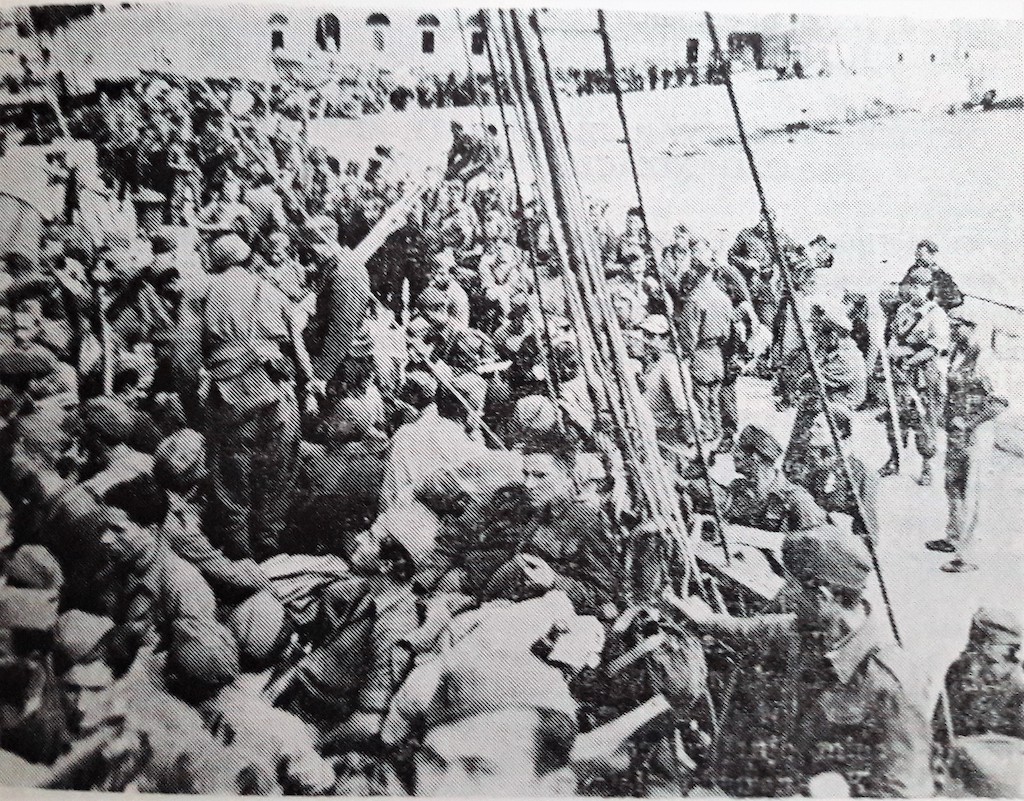
By May 1944, there were more than 10,000 troops on Vis, including Royal Marine Commandos 40 and 43, a Battalion of Highland Light Infantry, US Special Forces, and the Partisans’ 1st and 13th Dalmatian Brigades (including several hundred men and women from Hvar). An airstrip had been laid out to accommodate a flight of Hurricanes and Spitfires. The allied Commanders were indeed considering capturing Hvar and Brač to create a logistical “bridge” between Vis and the mainland.
Their planning was disrupted when the Germans suddenly struck a massive blow against Tito at his HQ in Drvar in Western Bosnia. At dawn on 25 May, five squadrons of Junkers bombers flattened the town, preceding an airborne attack by a full Battalion of SS Paratroopers. Simultaneously, the whole region was encircled by German and NDH troops. Tito escaped the immediate attack but still had to fight his way out of the wider trap that was being set. British SOE officers attached to his HQ radioed the news to Vis. Tito was demanding that all Partisan units attack the Germans wherever they could and pleaded for similar action from the British. On Vis, British and Partisan Commanders agreed on an immediate response: an amphibious attack on the island of Brač. It was to become the biggest Allied action in Yugoslavia during the entire war. The following is drawn from Commando records at the National Archives in Kew.
At 02.00 on 1 June, a Company of the Scottish were landed from Partisan schooners. They sailed round Hvar to Blaca cove on the South-West side of Brač. Their task was to eliminate an Observation Post on Vidova Gora, the highest point on the island, from which the Germans would have a clear view of the Allied landing zones along the south coast.
The Scots climbed up over the limestone ridges, each man carrying 60 lbs of weapons and supplies, and laid up for the rest of the day. At midnight, they attacked the German Observation Post. They came under heavy fire from concrete emplacements on which their mortar and stun gunfire had little effect. They cut the German telephone wires, fell back, reformed, and made a further determined attack, but were repulsed with heavy casualties. They had run into a barbed wire enclosure, heavily mined, surrounding the German position. All of their officers and ncos’s were either wounded or killed. Under heavy fire, they withdrew, making their way down the screen and winding tracks assisted by Partisan guides.
The main forces were landed unobserved at 00.30 on 2 June. 1,500 Partisans and 400 Commandos were landed at Blaca. The main task of this group was to destroy the German Command Post on a hilltop near Nerežišća in the centre of the island of Brač, overlooking their garrisons at Supetar on the north side and Sumartin at the eastern end of the island. Another 1,400 Partisans landed at Bol with the task of preventing the Germans from emerging from Sumartin. From dawn and throughout the day, the Partisans attacked Nerežišća, supported British artillery and air strikes by Spitfires from Vis. The Commandos joined the Partisan and made a more determined attack but failed to take their objective.
British Commandos carried out a further assault that night. Their leader was the eccentric Lieutenant Colonel Jack Churchill (no relation to the Prime Minister). Their attack was launched at 21.15 and pursued with great determination but after gaining part of the hill they were driven back. An hour later, Churchill led them on a further attack, playing his bagpipes as was his habit. They briefly took the German position but again the Germans reacted with mortar fire and counterattacked. Two troop leaders and a Lieutenant Colonel were killed. Churchill was wounded and taken prisoner with 35 of his men.
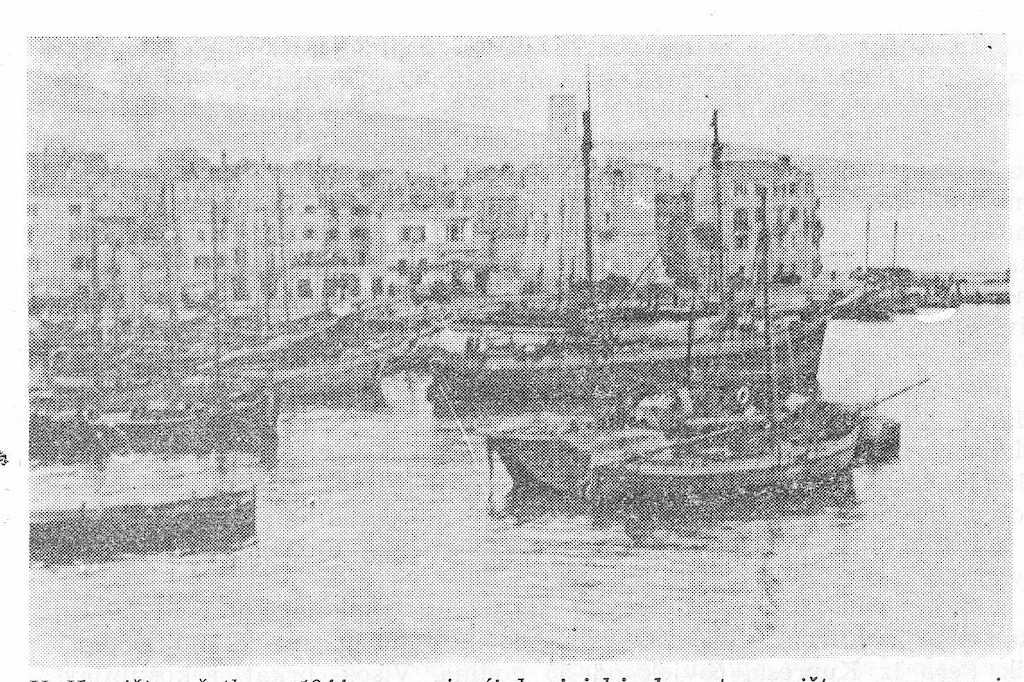
The German positions on the island consisted of an inner circle of rock and concrete linked by trenches and surrounded by minefields within barbed wire enclosures. They were killing zones. Nevertheless, the British had breached the barbed wire, crossed the minefields and engaged the enemy in their trenches until they ran out of ammunition. They then broke off, dragging their wounded with them. Evacuation began at 0600 that morning and a couple of hours later the surviving combatants were back on Vis.
The raid achieved its immediate objective. German forces were diverted from encircling Tito’s troops and the British got him out and flew him to Vis where he set up his headquarters. But a heavy price was paid. The British had lost their senior officers and nearly all their troop leaders, 16 men in all. Many of their 250 wounded would never fight again. The Partisans, who reported 130 Germans killed and 130 taken prisoners, lost 200. Moreover, there was no longer any need to establish a bridgehead to supply the Partisans on the mainland. The tide had turned. The biggest seaborne invasion in history was about to take place in Normandy, heralding the liberation of Europe from Nazi occupation and contributing to Allied victory on the Western Front.
New Fast Connection from Split Airport to Bol Starting on 1 June
Something new is on the cards for the very beginning of next month in time for the height of the tourist season for those wanting a direct line from Split Airport to Bol on the nearby island of Brač, the third largest island in Croatia.
As Morski writes on the 17th of May, 2019, as of the 1st of June 2019 to the 15th of September 2019, the new fast-freight company Adriatic Fast Ferries d.o.o. will introduce a fast-freight line four times a day from Split Airport to Bol on the central Dalmatian island of Brač. There will be two direct connections and two lines which will head to Bol via Split's busy ferry port.
The direct connection will take one hour from Split Airport to Bol, and the line which will stop at Split's ferry port will take an hour and twenty minutes. There will be three lines in place from Bol to Split per day, according to a report from the local portal Bol info.
Unlike for other ferries and connections, tickets for this new line can only be purchased online at the ship's website.
The catamaran for this line was built back in 1999 at the FBM Marine Ltd shipyard and was purchased from the English company Red Jet. The catamaran is 33 metres long and has a capacity of 190 passengers.
Make sure to follow our dedicated lifestyle and travel pages for much more.
Croatia Bol Open Returns to Brač this June!
May 17, 2019 - In anticipation of the list of players to be released next week, a program of events for the only WTA tournament in this part of Europe - the Croatia Bol Open - was presented.
"Our tournament has so far proved to be the right place for players to leap in their career since every winner of the tournament managed to break into the Top 100," said Feliks Lukas, director of the tournament last week in Milan.
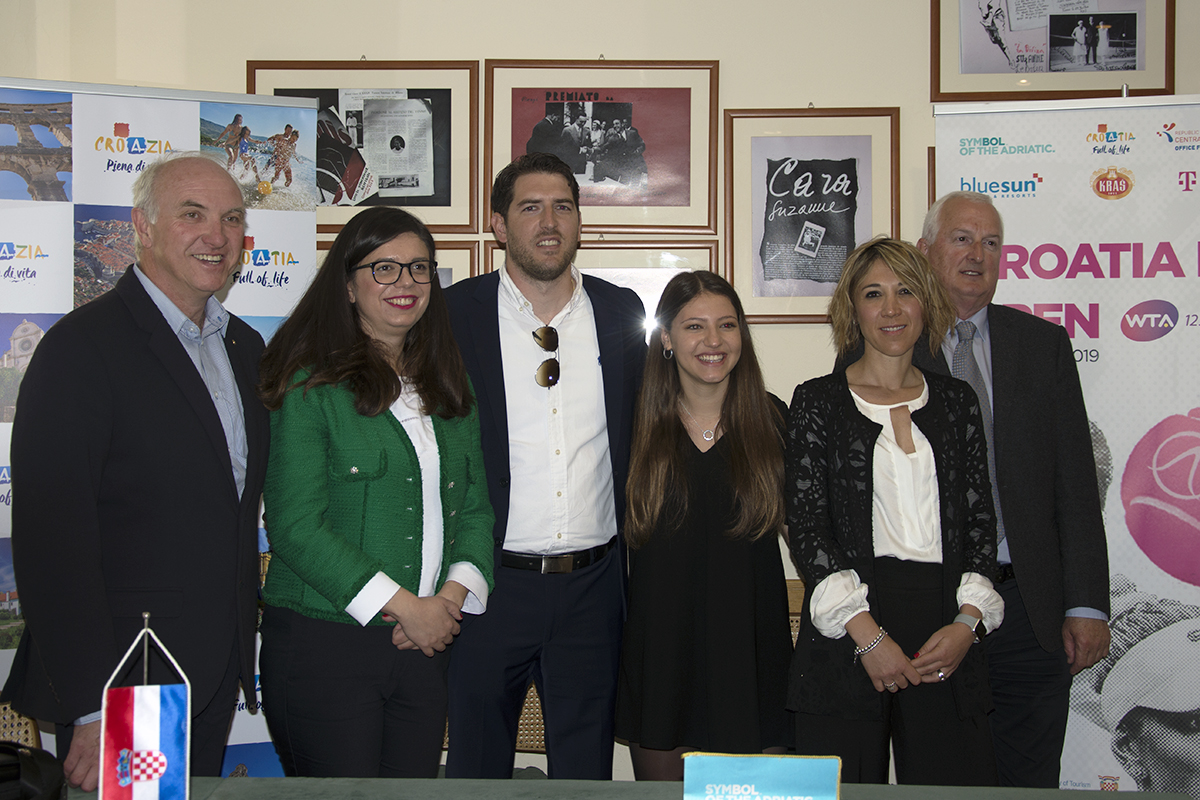
The significance of the tournament was recognized in the context of the promotion of Croatia, and in cooperation with the Croatian Tourist Board, it was presented to the leading Italian media in the premises of the tennis club A. Bonacossa.
The Croatia Bol Open and the destination itself were presented by the mayor of Bol, Tihomir Marinković, the director of the Bol Tourist Board, Markito Marinković, the director of the HTZ representative office in Milan, Viviana Vukelić, and the director of the tournament Feliks Lukas. The unique story of the beautiful Bol, the BlueSun Zlatni Rat Tennis Center, and the sports and entertainment program of the competition intrigued those involved in Italian sports and the general public, as is evidenced by the fact that the WTA Croatia Bol Open story was last week published in the Gazzetta dello Sport.
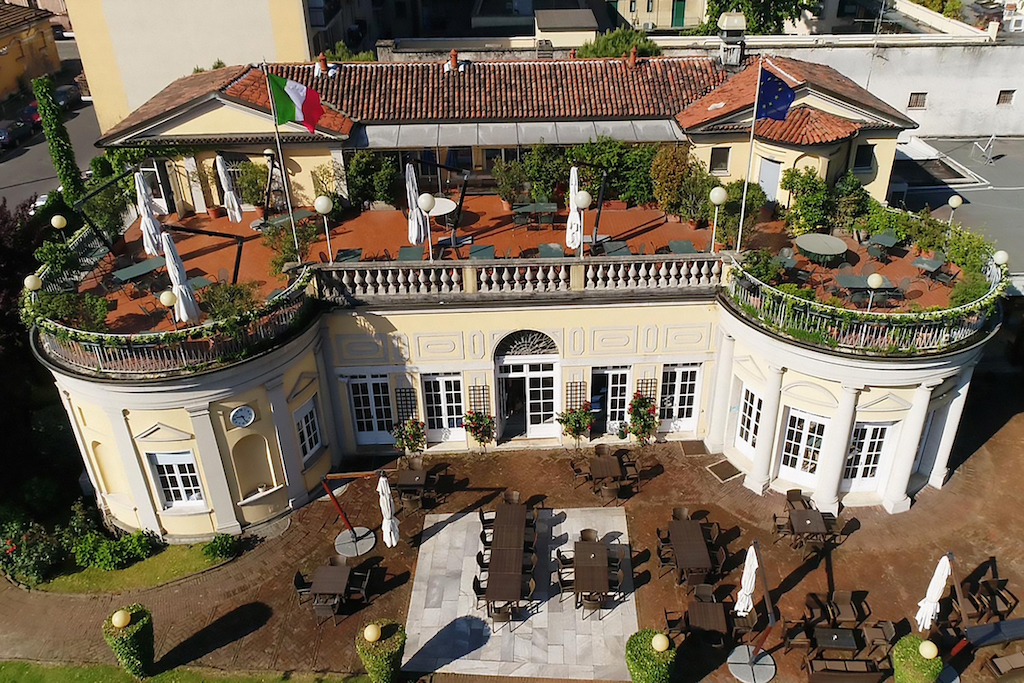
Combing the unique characteristics of the destination and the tournament is continuously a reason many tennis players return to Bol each year, such as A. Krunić, T. Zidansek, P. Hercog, M. Minella, who we can expect to return this year to fight for the prize and 160 WTA points.
It is well known now that the director of the tournament will invite FED Cup representatives Jana Fett and Teni Lukas, while the remaining two will be announced before the start of the tournament. On the list of 250 tennis players, there are 16 in the Top 100 and the list ends with the 116th best tennis player in the world. Up to 26 players can enter the tournament directly, while 145 are on the waiting list.
The tournament begins on June 3rd with the draw and Player's party. The first round will be played on Tuesday, and the big news this year is the introduction of night matches. Namely, night games in the first round will be played at 20:30 on the Central court, while Sunday's finals will begin at 20:05. For those who can’t make it to Bol, you can enjoy a direct transfer on your television screens thanks to the second program on HTV.
However, the entertainment on the Central court this year will begin an hour earlier, from 19:00, when Nina Badrić will take the stage of the WTA Croatia Bol. The closing ceremony of this year's tournament will feature top pianist Lola Astanova, one of the world’s best piano talents.
Furthermore, the organizers have announced klapa Šufit and Kambi on the Friday of the tournament, and on June 8, the star of Saturday night will be Niki Belucci, who will perform at the Varadero club.
For all those who want to experience Bol, a top sporting event, and great fun, tickets for WTA Croatia Bol Open are available at www.ticketshop.com.
To read more about sport in Croatia, follow TCN’s dedicated page.
World's Biggest Welcome in Croatia: Day 45 - Bol to Hvar (Kayak)
May 6, 2019 - Putting Croatian adventure tourism on the map, with the biggest welcome in the world. Day 45 of this incredible 2011 adrenaline trip covering 2,500 km along the Croatian coast.
The World's Biggest Welcome, an ambitious adventure tourism project in 2011 in Croatia enters Day 45 of this 2019 appreciation of one of the finest tourism promotion projects ever in Croatia.
The plan? To showcase the diversity and fabulous offer of adventure tourism in Croatia by following a GPS route the length of the Croatian coast in the shape of the word 'Welcome' - thereby creating the biggest welcome in the world from a hospitable tourism country.
Day 45 moved from Bol on the island of Brač to the island of Hvar by kayak to continue forming the 'M' in 'Welcome'. The 'Welcome team' also had an epic welcome to Hvar town.
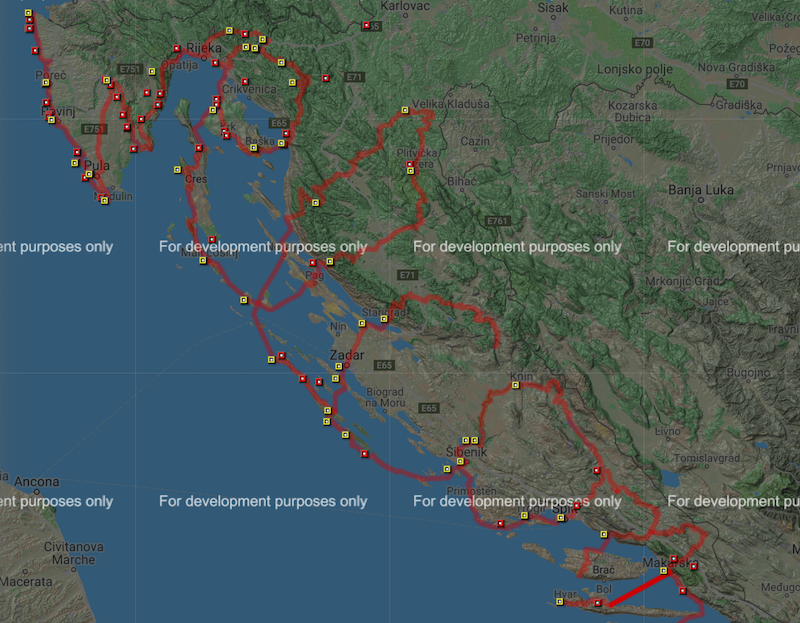
Day 45 began at one of Croatia's most famous beaches - Zlatni Rat in Bol.

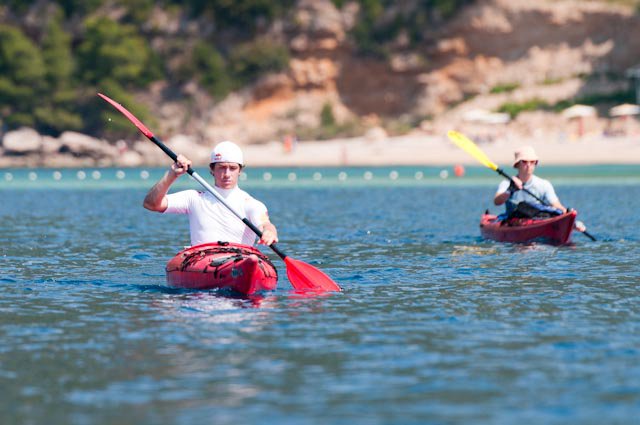
The crew then started their journey to Hvar.

And was even followed by a helicopter.
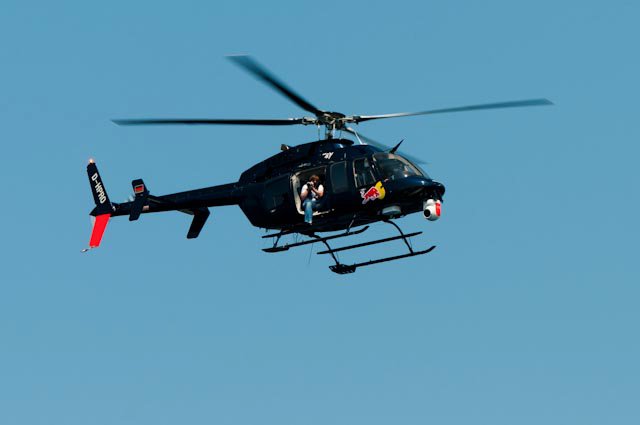
A Red Bull helicopter.
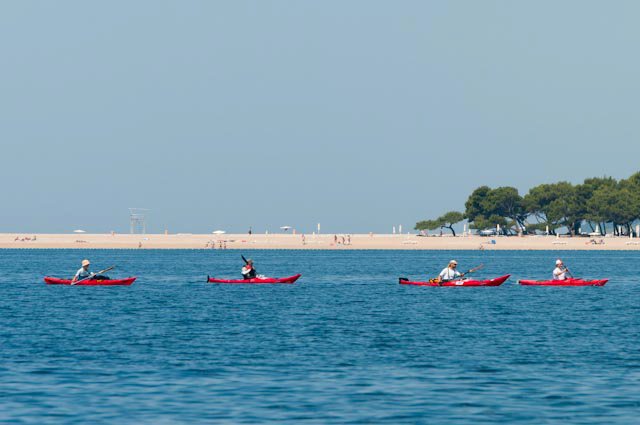
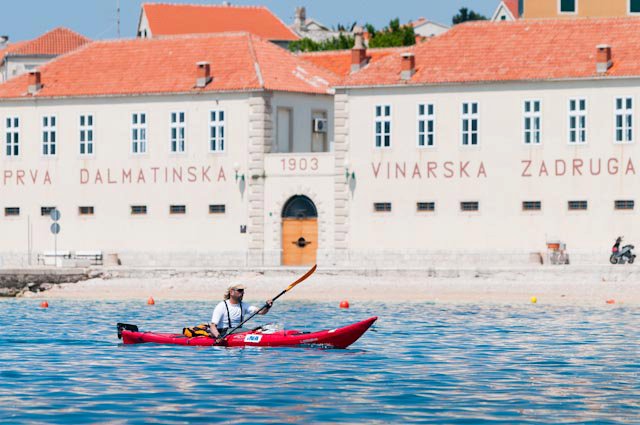
The team forming in Bol.
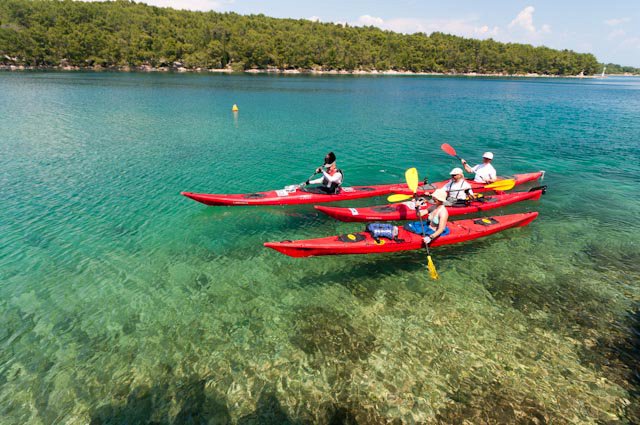

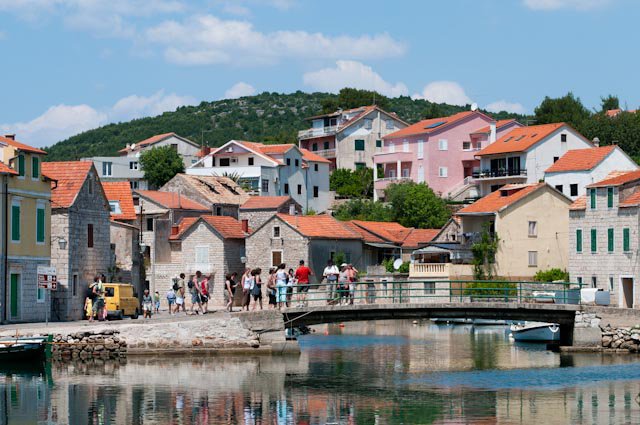
From Brač to Hvar - arriving in Vroboska.
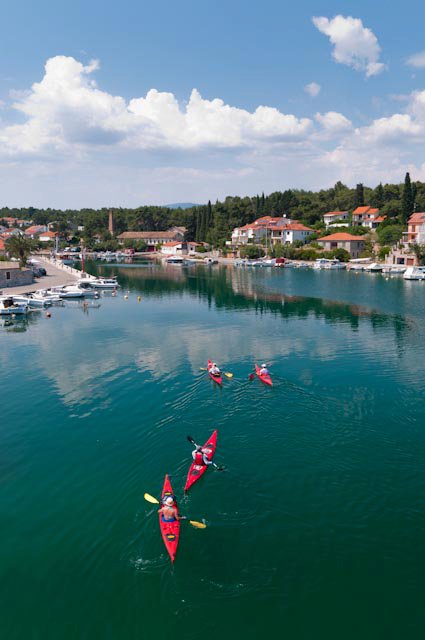
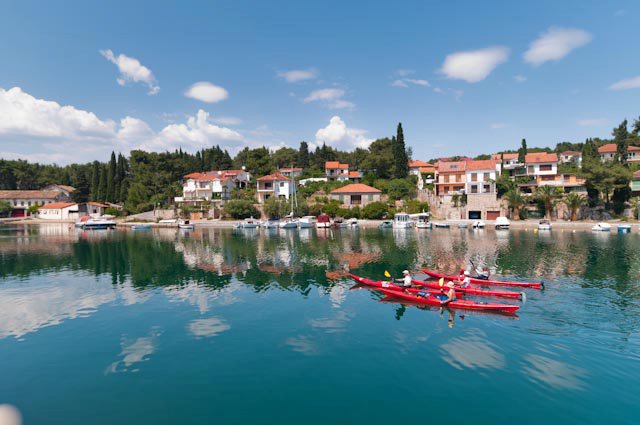
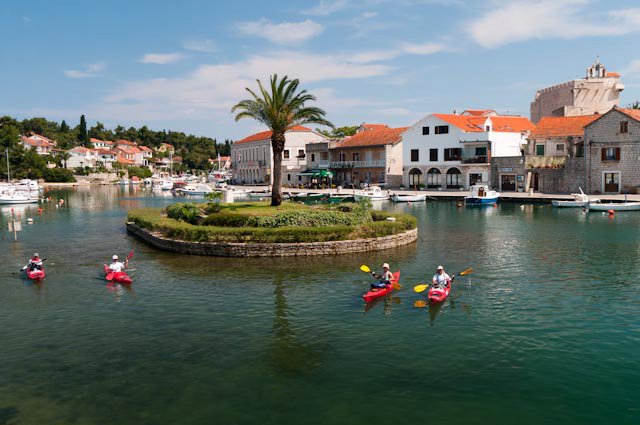
Vrboska's most common nickname is 'Little Venice' as it has just one canal.
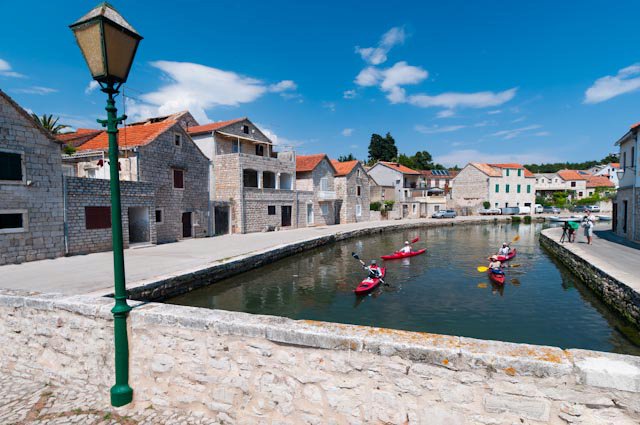
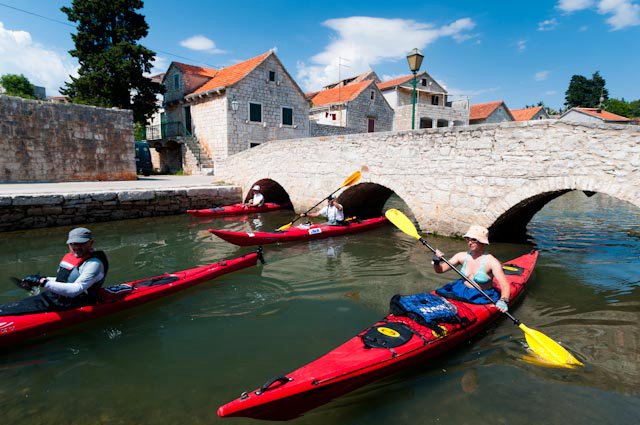
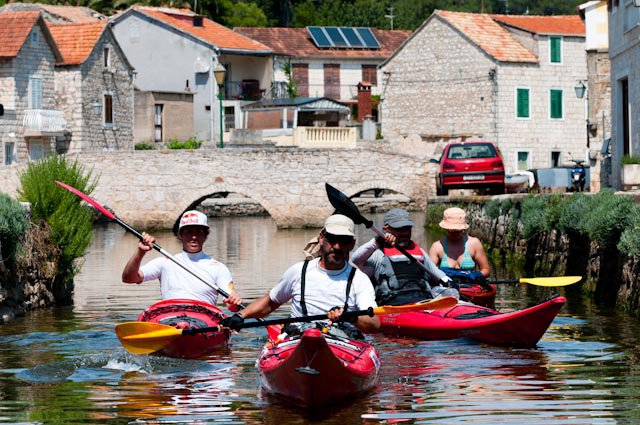
The canal and Vrboska's stone bridge.
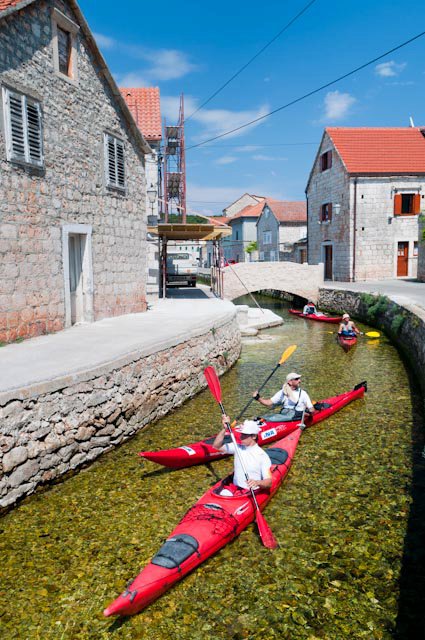
Seems as if the group could barely fit!
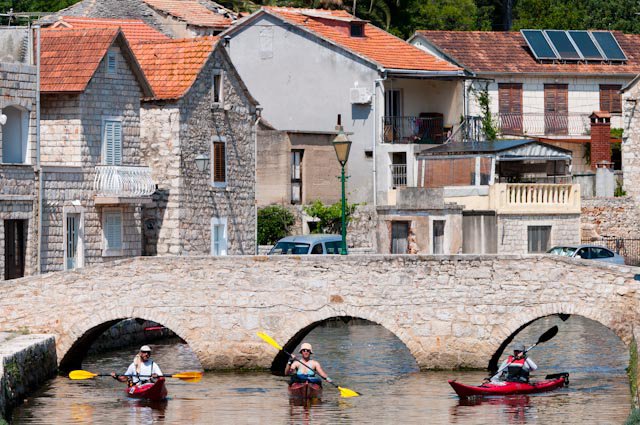
The charming town in all of its glory.

The team then traveled from Milna to Hvar town.
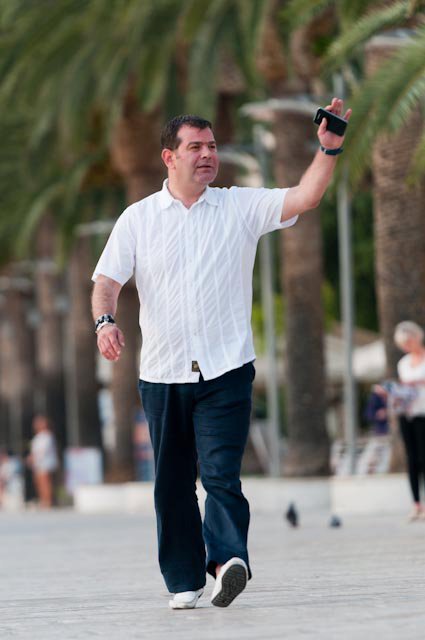
Where they were greeted by Hvar mayor Pjerino Bebic.
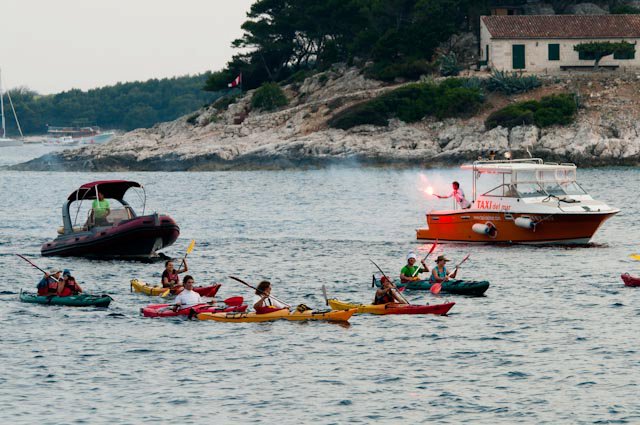
And flares.
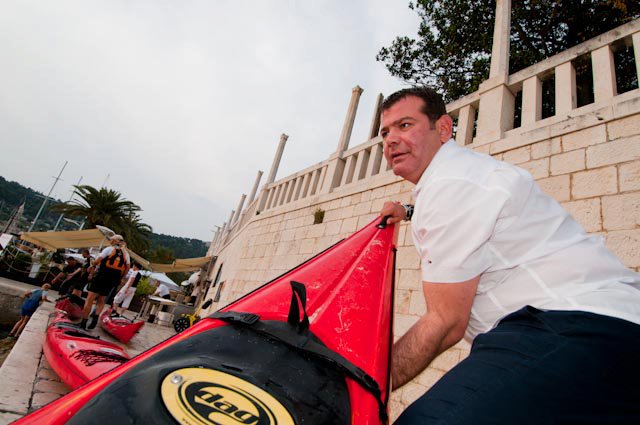
The mayor even helped the team pull their kayaks out of the sea!
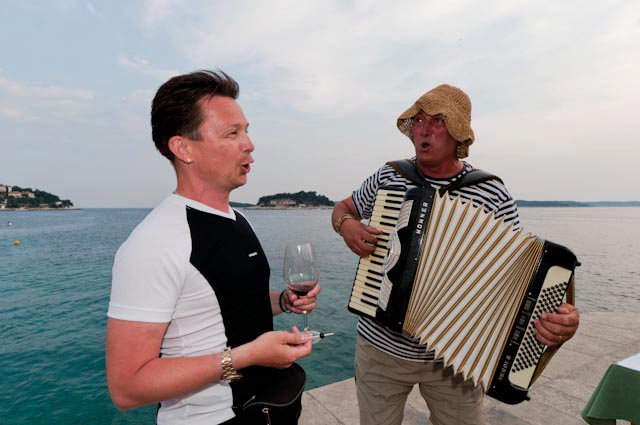
And then it was time to party.
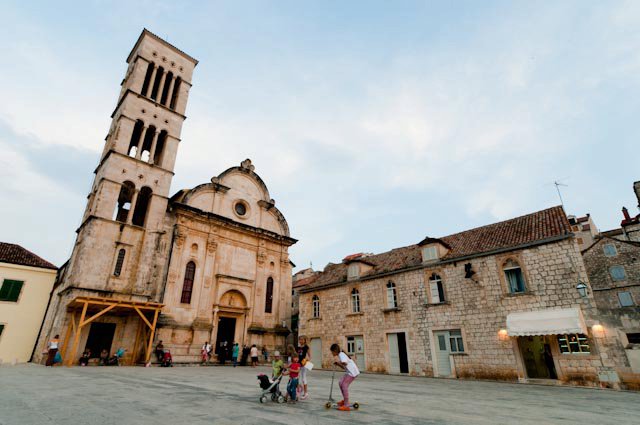
The Cathedral of St. Stephen.
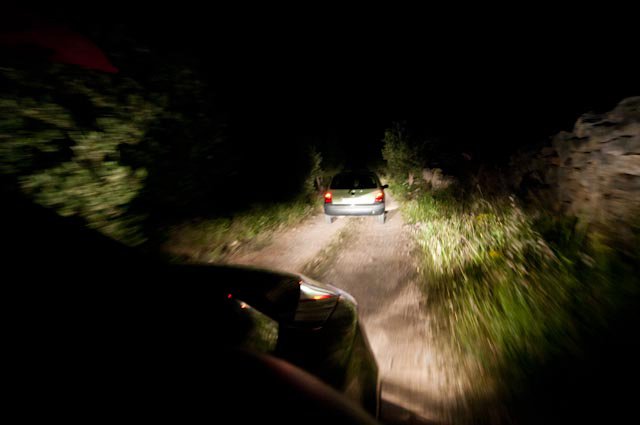
The team traveled to Malo Grablje in the evening.
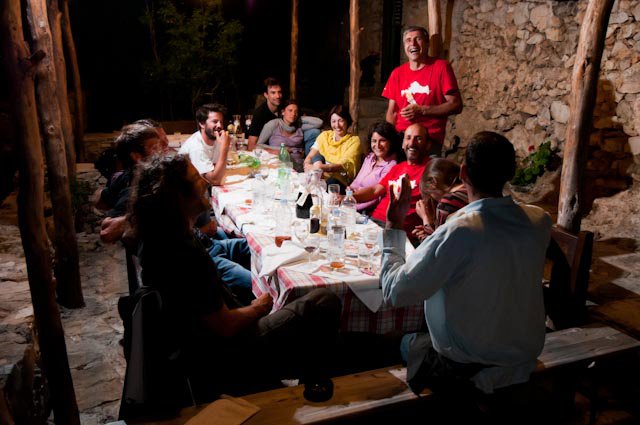
And ended the night at tavern Stori Komin in Malo Grablje.
A key part of the project was promoting tourism, and the official website has details of the key places visited during the day.
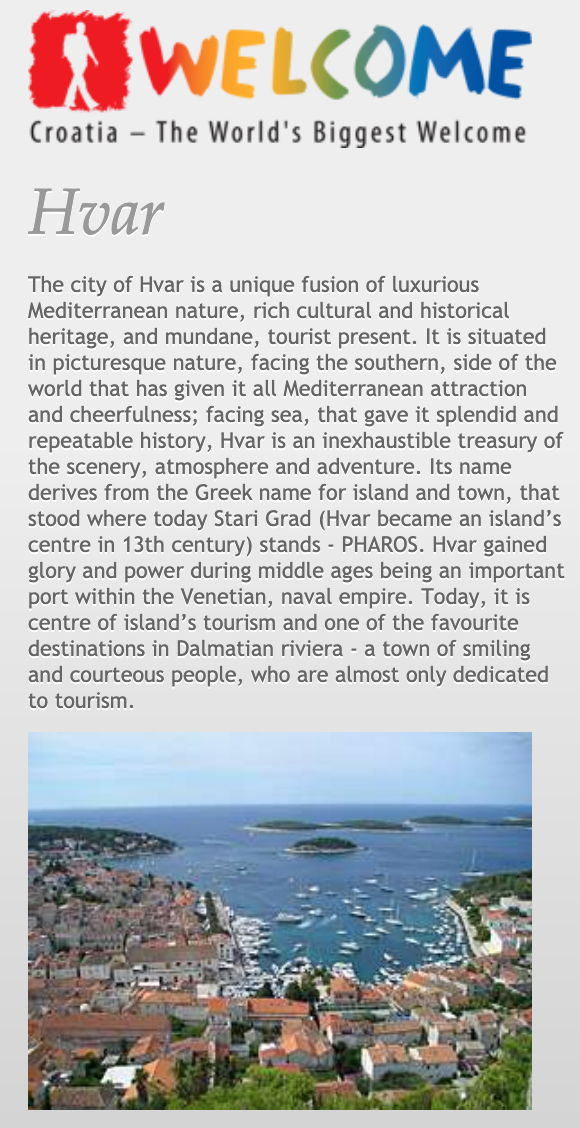
Hvar.
You can see the entire project on the Welcome website, as well as much more of Luka Tambaca's stunning photography on the Welcome Facebook page.
Tune in tomorrow for Day 46, as Lacko moves from Makarska to Lovište.
To follow the whole project from the start, follow the dedicated TCN page.
All photos in the story by Luka Tambača.
World's Biggest Welcome in Croatia: Day 44 - Makarska to Bol (Kayak, Bike)
May 5, 2019 - Putting Croatian adventure tourism on the map, with the biggest welcome in the world. Day 44 of this incredible 2011 adrenaline trip covering 2,500 km along the Croatian coast.
The World's Biggest Welcome, an ambitious adventure tourism project in 2011 in Croatia enters Day 44 of this 2019 appreciation of one of the finest tourism promotion projects ever in Croatia.
The plan? To showcase the diversity and fabulous offer of adventure tourism in Croatia by following a GPS route the length of the Croatian coast in the shape of the word 'Welcome' - thereby creating the biggest welcome in the world from a hospitable tourism country.
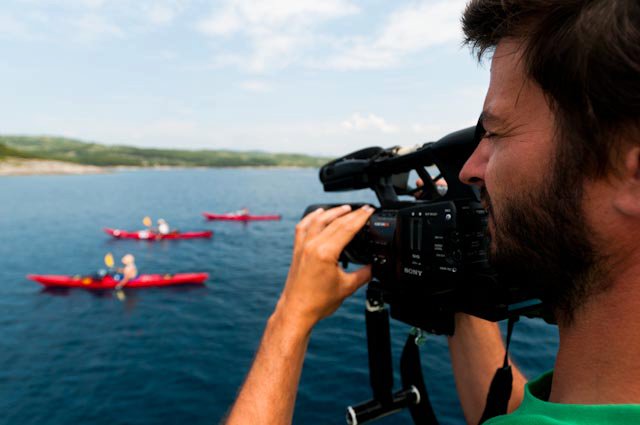
Day 44 moved from Makarska to Bol on Brač via kayak and bike.
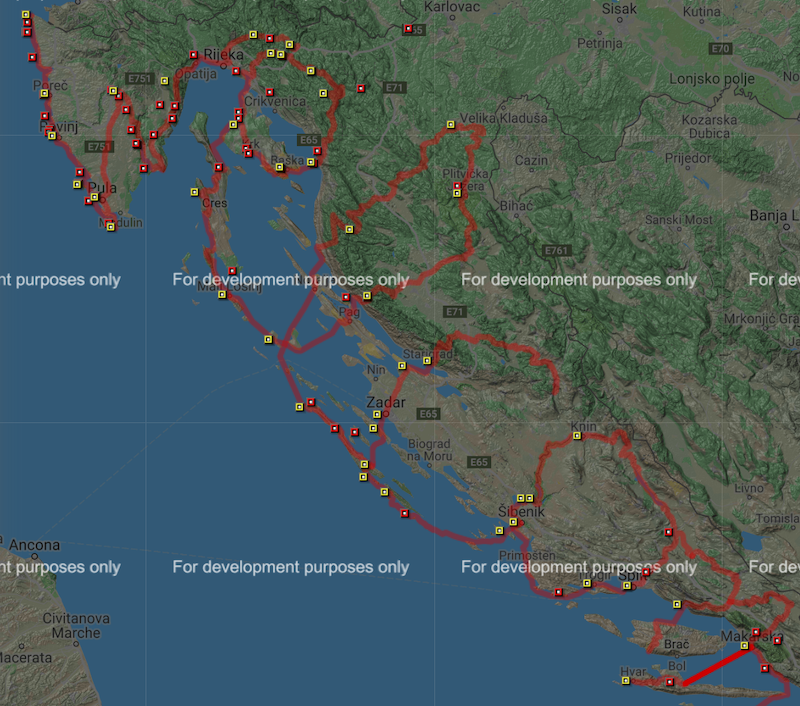
Day 44 began from Makarska as Lacko and Cedo prepared the kayak in the sea.
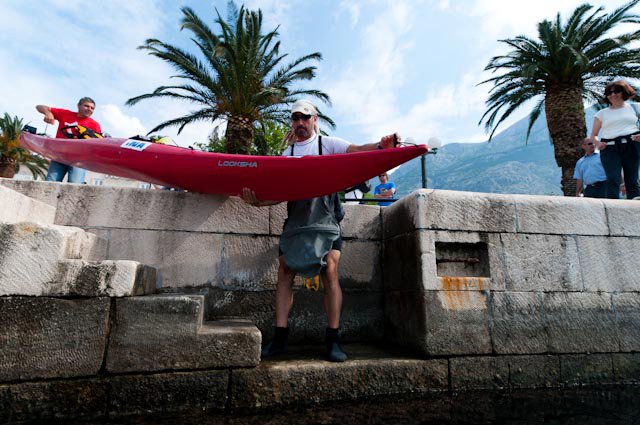
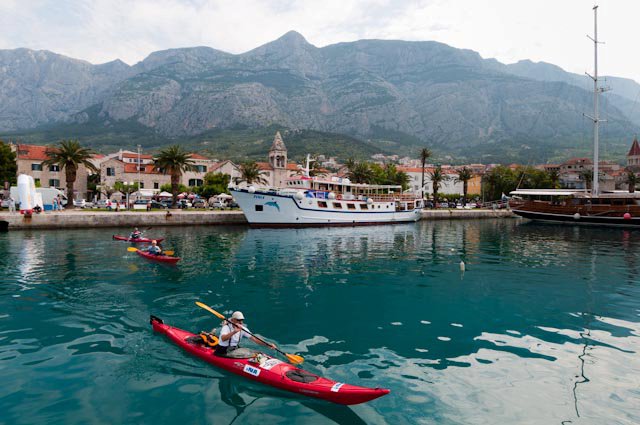
A look at Lacko departing from Makarska.
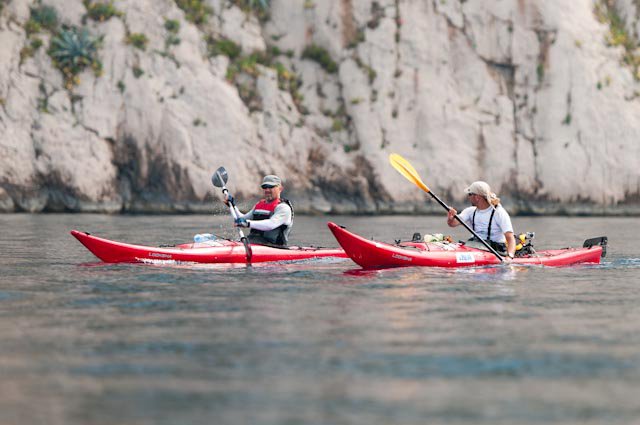
Lacko and Sajko rowing towards Brac.
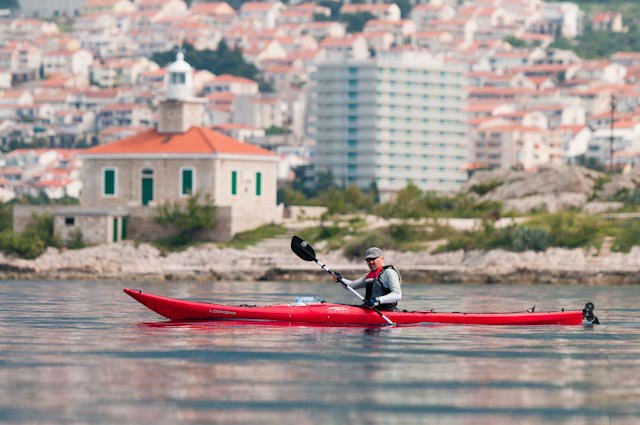
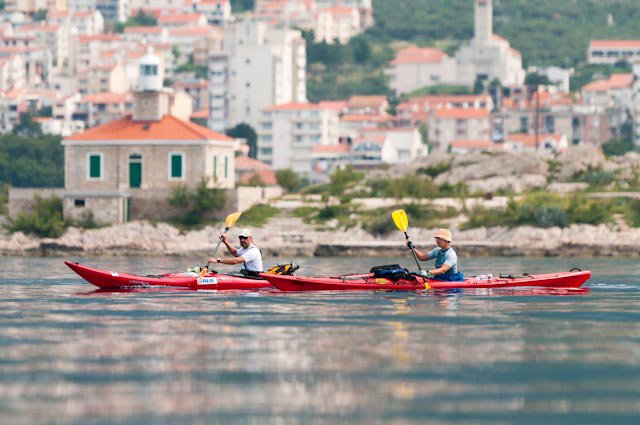
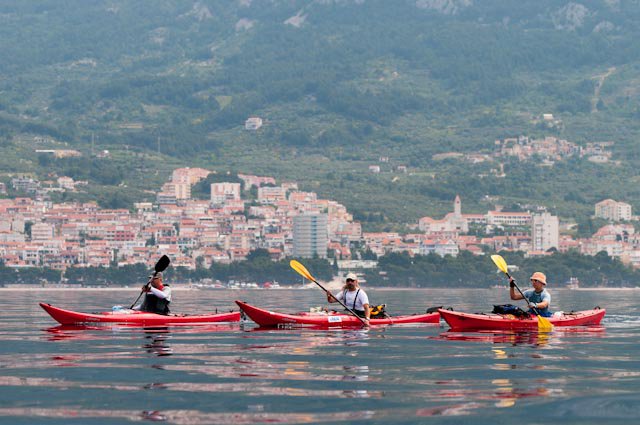
Makarska in the distance.
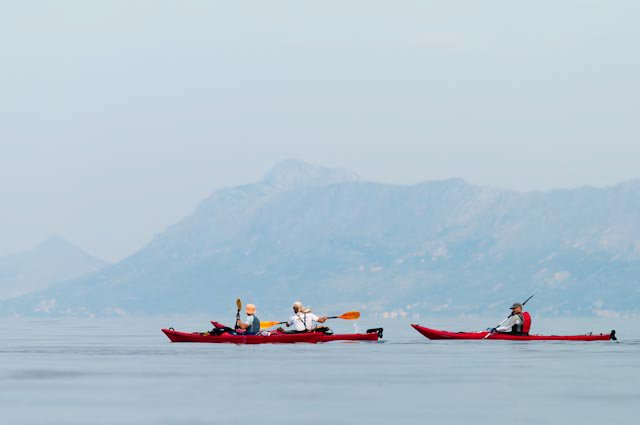
Tea, Lacko and Sajko.
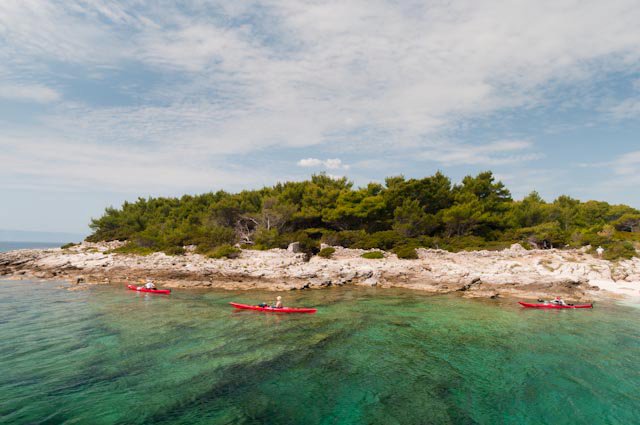
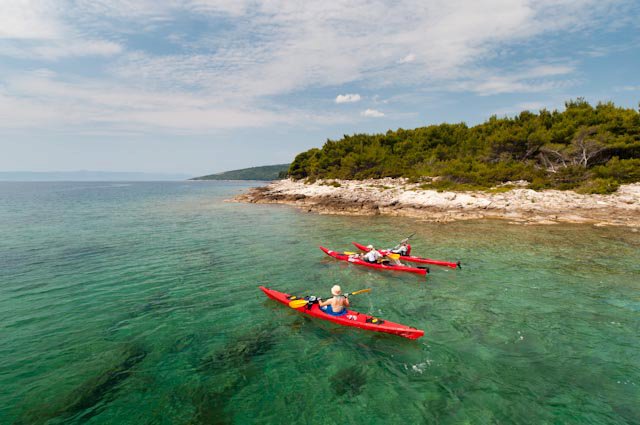

The group made it to Brač.
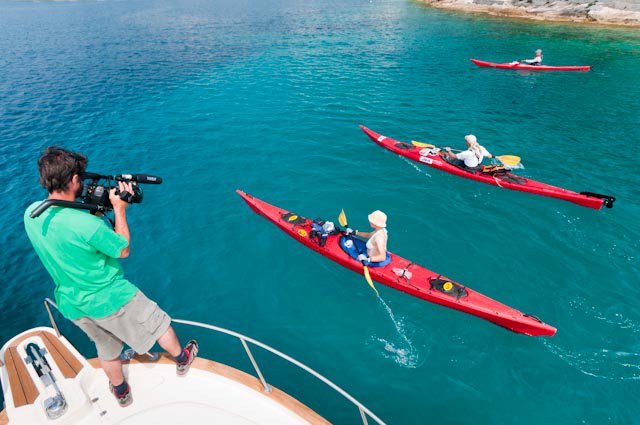
The perfect photo opportunity.
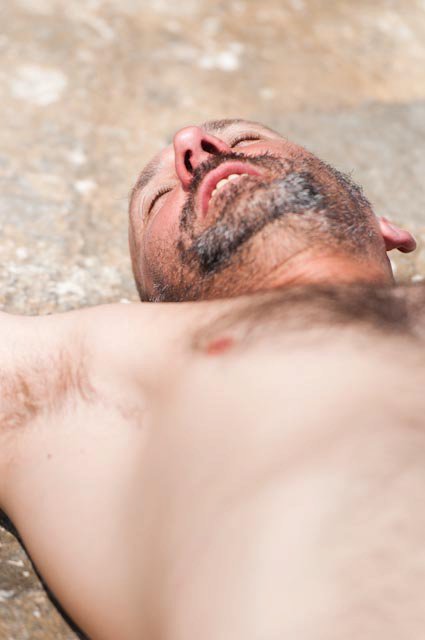
Lacko needed a break.
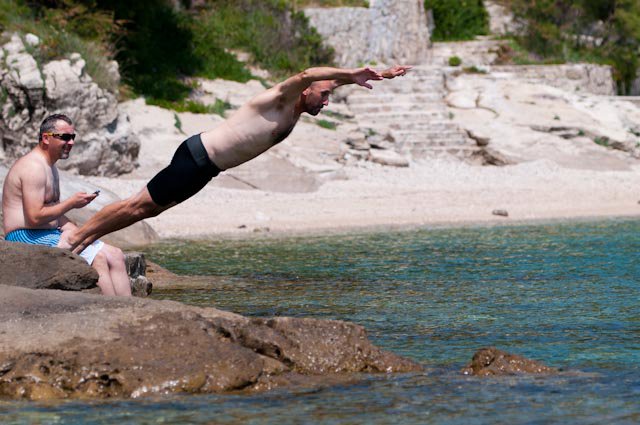
And a bit of therapy.
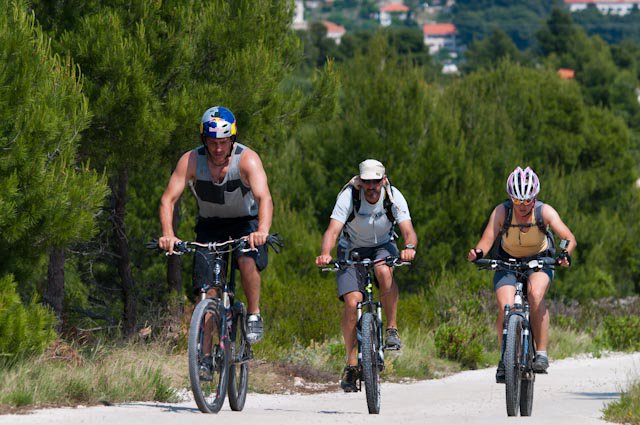
After a bit of rest, the group painfully pedaled above Sumartin.
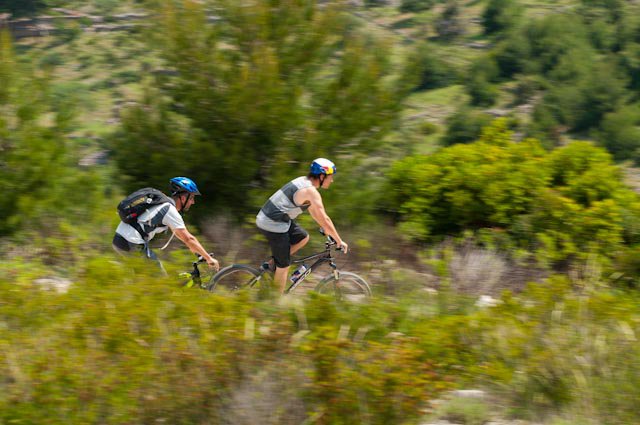
Lacko and Mislav pedaling towards Vidova gora hill.
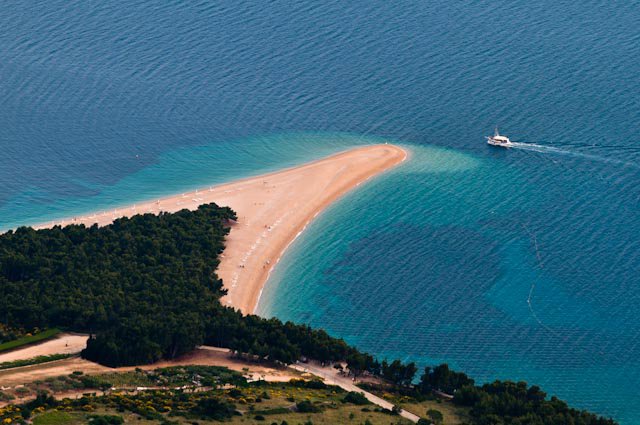
And Zlatni Rat in all of its glory.
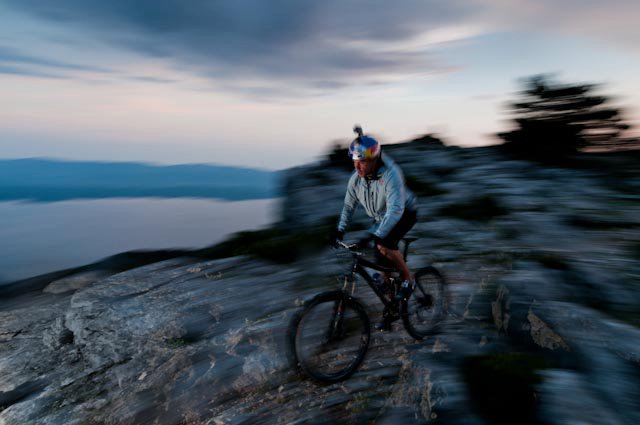
To end, a descent down Vidova gora hill.
A key part of the project was promoting tourism, and the official website has details of the key places visited during the day.

Makarska.
You can see the entire project on the Welcome website, as well as much more of Luka Tambaca's stunning photography on the Welcome Facebook page.
Tune in tomorrow for Day 45, as Lacko and the team move from Brač to Jelsa on the island of Hvar.
To follow the whole project from the start, follow the dedicated TCN page.
World's Biggest Welcome in Croatia: Day 40 - Omiš to Blaca (Kayak, Bike)
May 2, 2019 - Putting Croatian adventure tourism on the map, with the biggest welcome in the world. Day 40 of this incredible 2011 adrenaline trip covering 2,500 km along the Croatian coast.
The World's Biggest Welcome, an ambitious adventure tourism project in 2011 in Croatia enters Day 40 of this 2019 appreciation of one of the finest tourism promotion projects ever in Croatia.
The plan? To showcase the diversity and fabulous offer of adventure tourism in Croatia by following a GPS route the length of the Croatian coast in the shape of the word 'Welcome' - thereby creating the biggest welcome in the world from a hospitable tourism country.

Day 40 moved from Omiš to the Blaca Hermitage located on the southern side of Brač island.
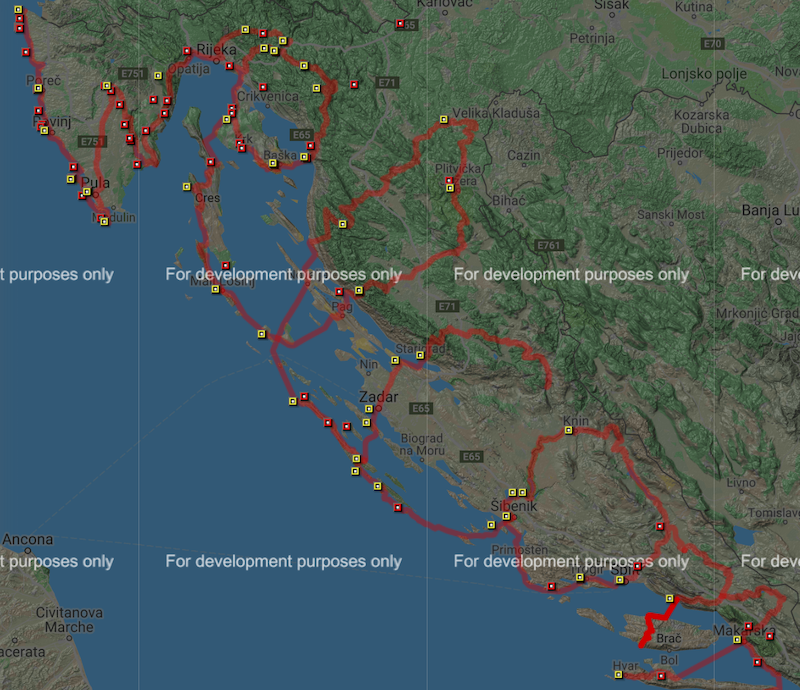
34 kilometres for the day: 16 km kayak ride from Omiš to Supetar, followed by an 18 km bike ride from Supetar to Nerežišća and Blaca to continue forming the ‘L’ in ‘Welcome’.
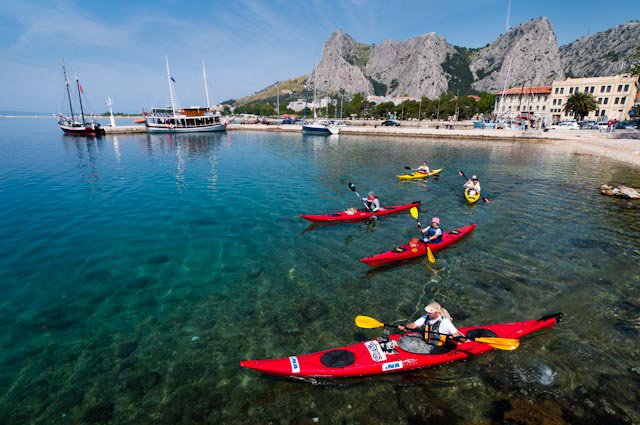
Day 40 began by setting off from Omiš to the island of Brač.
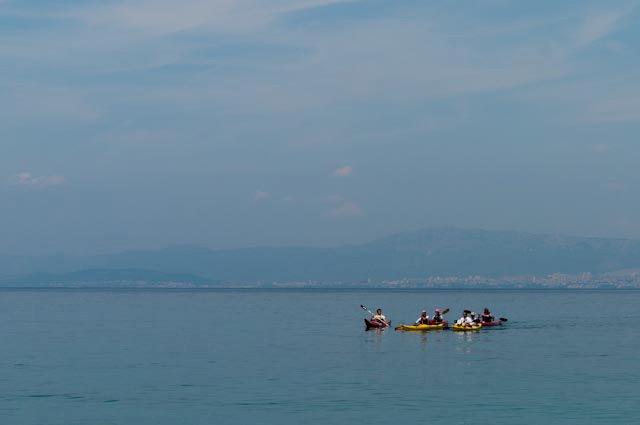
Lacko and his team made it to Supetar.
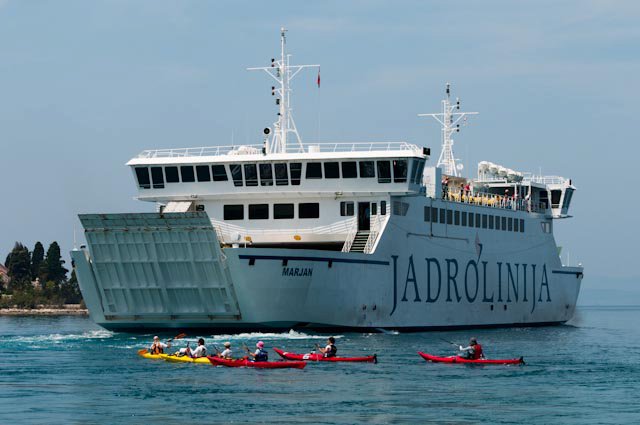
Which was marked by one of Jadrolinija's most famous ferries between Supetar and Split.
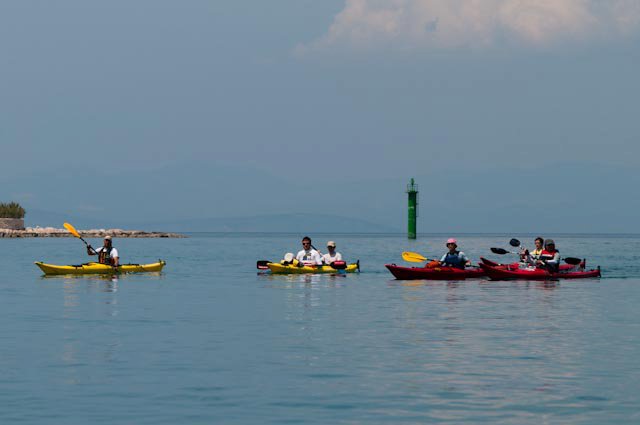
Lacko and the team inching their way to the harbor.
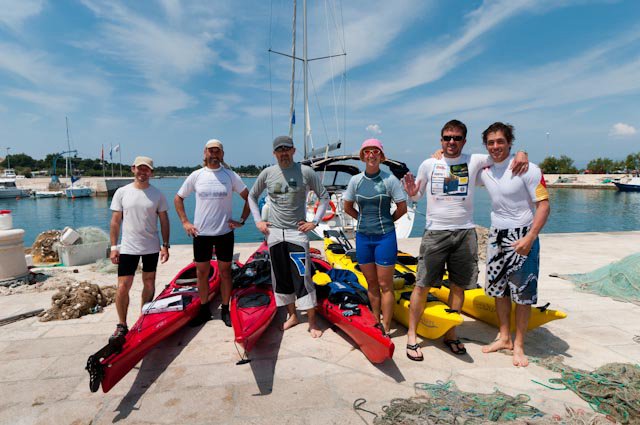
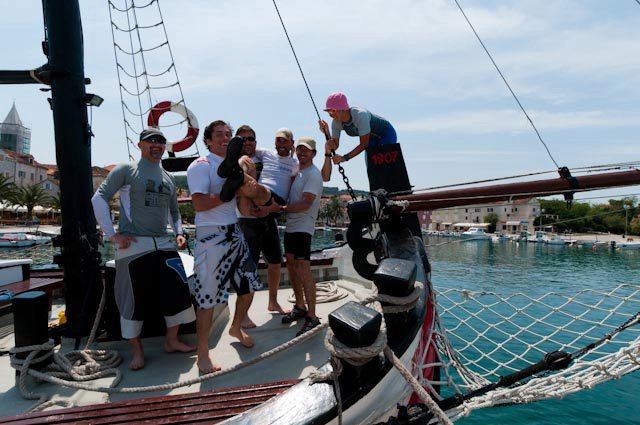
A better look at the 'Welcome' team.

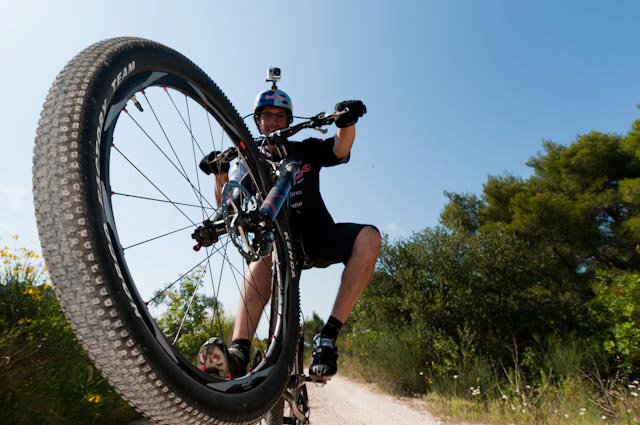
From Supetar, the group cycled towards Donji Humac.
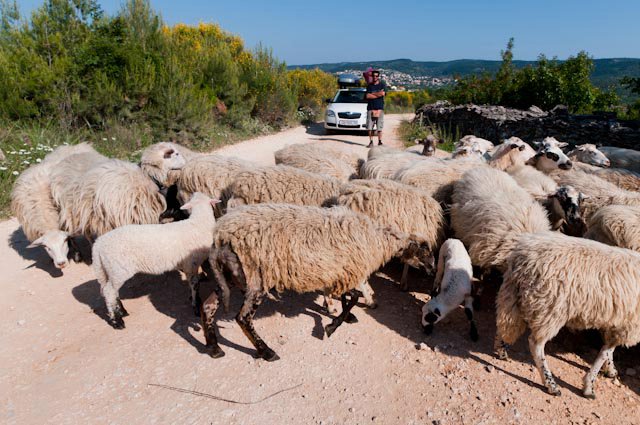
But the traffic on Brač held them up.
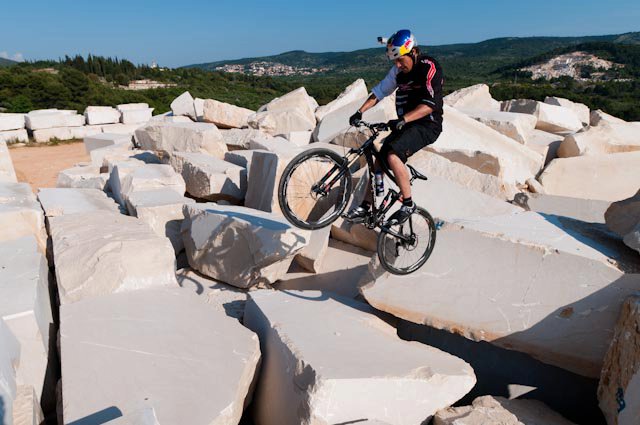
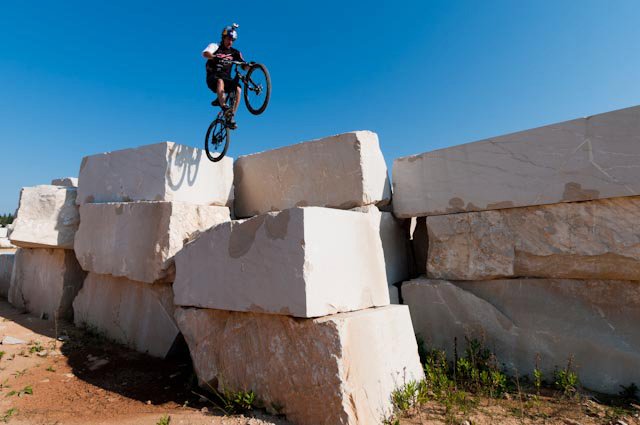
Mislav tested out some of his stunts on the famous Brač rocks.
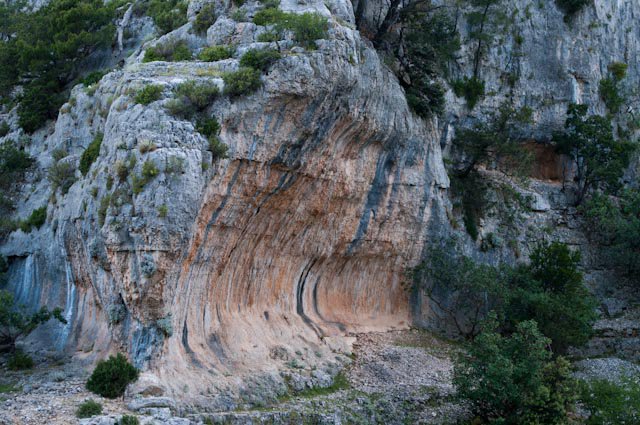
The group made it to a secret location on the island.
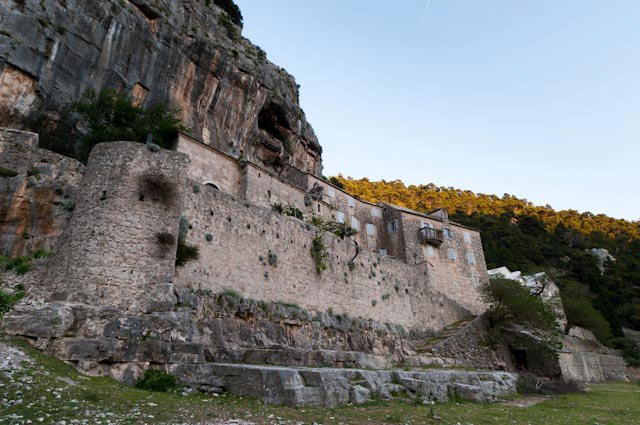
Blaca.
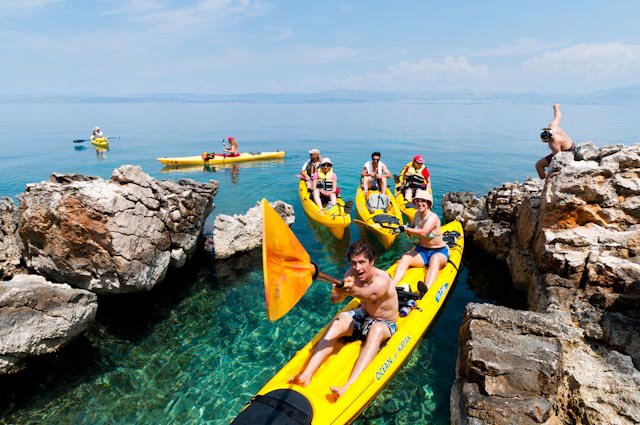
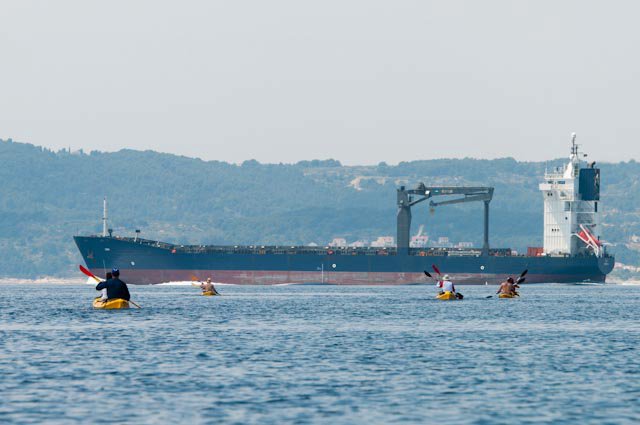
The group even had a free day on the island and decided to kayak from Sutivan to Šolta!
A key part of the project was promoting tourism, and the official website has details of the key places visited during the day.
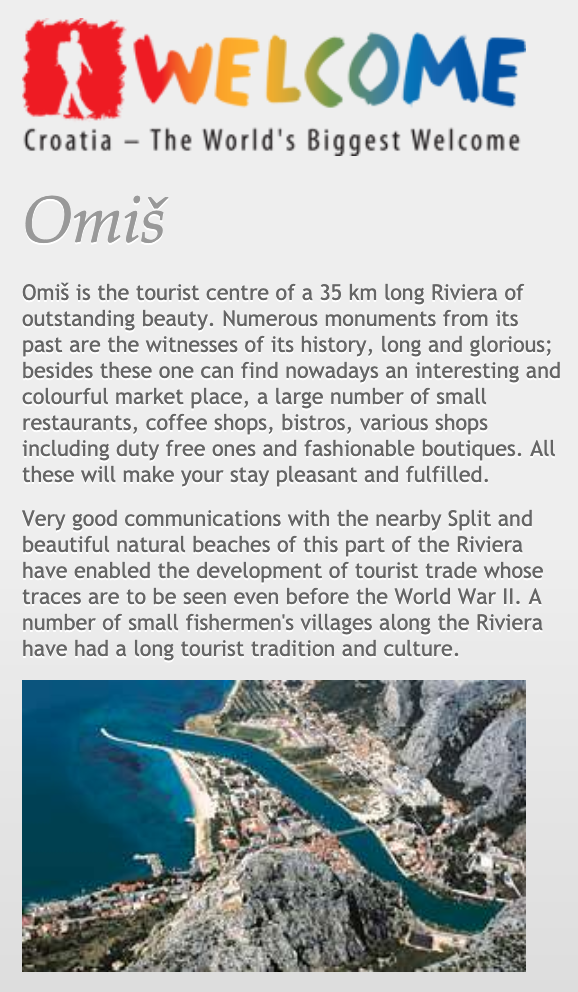
Omiš.
You can see the entire project on the Welcome website, as well as much more of Luka Tambaca's stunning photography on the Welcome Facebook page.
After a free Day 41, tune in tomorrow for Day 42, as Lacko moves from Šestenovac to Imostki.
To follow the whole project from the start, follow the dedicated TCN page.
Brač School of Stone Masonry Offers Help in Notre Dame Restoration
ZAGREB, April 18, 2019 - The school of traditional stone masonry at Pučišća on the Croatian island of Brač has offered to help the French network of vocational schools "Les Compagnons du Devoir" in restoring the Notre Dame Cathedral which was damaged in a fire on Monday night.
In honour of our decade-long cooperation with that association, we offered to help in restoring Notre Dame, the Pučišća school's principal, Tamar Plastić told Hina on Thursday.
The school has been teaching generations for 110 years and is one of the rare places in Europe where qualifications in hand carving stone can be obtained. It cooperates with numerous European associations, including the network of vocational schools that nurtures France's architectural heritage.
Pučišća masters presume that France will need stonemasons for the restoration and we can provide them. Stonemasons who attend the Pučišća school have already proven themselves in the reconstruction of numerous buildings, including churches damaged during the Homeland War in the 1990s.
The restoration of Notre Dame will more than likely be a topic at a symposium of stonemasons that is being held in Pučišća from May 16 to 18, bringing together numerous experts and companies involved in stone excavation, processing and remodelling.
The Brač school's uniqueness has been recognised by many foreign media, such as those from Japan, the United States, Germany and France. Philippe Cousteau, the grandson of famous ocean life explorer Jacques Cousteau, filmed an episode of the Xploration Awesome Planet series in 2014.
On the occasion of its 110th anniversary, the school was recently featured on the cover of "Stone ideas", which presents architecture and design using natural stone.
More Brač news can be found in the Lifestyle section.
First Croatian Olive Oil for Children - Brachia Kids
There's no denying that Croatian olive oil is second to none, and we're not the only ones who think it. Croatian produce has won award after award and the long coastal traditions of olive growing, picking and harvesting in Croatia are worthy of just as much praise as the final results of that hard work are.
As Morski writes on thr 4th of April, 2019, the respected Brač brand of olive oil, Brachia, has launched Brachia Kids, the first Croatian olive oil made just for children of kindergarten and elementary school age, reports Journal.hr.
''Brachia Kids brings the fresh and intriguing taste of organic olive cultivation from ecological [olive] growing from the island of Brač. These flavours are ideal for children when it comes to falling in love with the taste of olive oil. This new product is intended for parents who understand the healing properties and the great nutritional value(s) of olive oil, and who want to introduce it to their children's diet,'' said Leopold Botteri, the co-manager of the Brachia cooperative.
Part of the main role in popularising the consumption of olive oil for children will also be played by its attractive packaging, which has been made by Izvorka Jurić and Jurica Kos.
''We've designed the packaging so that the product is attractive to children, fun to use, and also educational, in order to develop their awareness of the importance of the regular use of olive oil. The body of a glass vial (0.25 dcl) has been partially placed in a box that, together with the black tip of the bottle, forms a crayon, and within which six crayons are actually housed. Following the dissolution of the box, there is a fun colouring book with illustrations of olive trees and leaves and various tasks for children to complete. Olive oil nourishes the body, and the puzzle and colouring on the packaging, acts as food for the brain. Together, they make a complete product for the healthy development of children,'' explained packaging designer Izvorka Jurić.
In addition to the premium olive oil of Brachia Maslina and the latest Brachia Kids product - Izvorka Jurić has designed products for the lines of Brachia sort oils, ecoBrachia and Brachia & Friends. All of these products, including Brachia Kids' olive oil for children, are now available for purchase in UJE stores across the Republic of Croatia.
Make sure to follow our dedicated Made in Croatia page for much more.
Brač: Kids With Special Needs Should Have Free Transport
Living on a beautiful Dalmatian island might be the dream of many, but the daily grind and the confronting realities of island life often pour cold water on paradise-type notions. From access to various types of transport to water to regular ferry lines to and from the mainland, life on an island isn't always what it's cracked up to be. Brač's inhabitants however, are fighting the good fight for those who need it most.
As Morski writes on the 24th of March, 2019, for years now, Brač's Red Cross has helped the Association of parents of children with developmental disabilities through numerous organised actions and various donations. Owing to this, a large number of therapies on the island of Brač have been secured, but often kids and their parents still have to go to the mainland multiple times for other therapies. With that in mind, Red Cross Brač has initiated a petition with the aim to amend the law which governs transport between the island and the mainland.
"For this reason, Red Cross Brač initiated the initiative along with ''Brač buds'' to amend the necessary law in a manner that will in the future regulate the exercise of the right to free transportation on public transport for children with developmental difficulties residing on an island who need physical, sensory, communicative, or linguistic therapy, as well as those who have intellectual difficulties when it comes to learning and development support to achieve the best possible developmental outcomes and social inclusion.
The desired change to the law will also positively affect those with severe disabilities residing on an island whose long-term physical, mental, intellectual or sensory impairments may interfere with daily life and create various and multiple obstacles to their full and effective participation in society on an equal basis with persons without disabilities.
This proposal seeks to highlight one aspect of discrimination against island children with developmental disabilities compared to the rest of the more privileged population.
Make sure to follow our dedicated lifestyle page for much more.
Energetic Transition Process Begins on Croatian Islands
The Clean Energy Secretariat on EU islands held an energy transition workshop attended by representatives from the Croatian islands of Brač, Cres, Hvar, Korčula and Lošinj last week.
As Morski writes on the 18th of March, 2019, Croatian islands officially launched an energetic transition up and down the coast. Back at the beginning of February this year, the Secretariat's initiative for clean energy for the EU's islands, which was initiated by the Croatian MEP Tonino Picula, announced a list of 26 European island communities that will receive expert and advisory support for the energy transition strategy in the coming period, writes Pokret otoka (Island movement).
Among the 26 selected islands are four Croatian island communities: The Cres-Lošinj archipelago and Brač, Hvar and Korčula. The two-day workshop, organised with the cooperation of the cities of Cres and Mali Lošinj, the OTRA Island Development Agency, LAG Kvarner Islands and Pokret otoka (Island movement) as local partners, gathered forty representatives of selected islands that, with expert assistance, will set the first foundations of energy transition plans. The gathering took place last weekend and this is the first of a total of ten workshops which will be carried out by the Secretariat for the EU islands in the forthcoming period.
Representatives of transition teams from all five islands participated in the workshop in Mali Lošinj, which will work on strategy development in cooperation with partners and experts in the coming period. The goal of the two-day workshop, besides transferring knowledge and experiences from different areas, has also been gathering, networking and strengthening the island's stakeholders for further cooperation in the energy transition process.
The Cres-Lošinj archipelago, set as one of the six European pilot projects, should have its energy transition plan should be ready by the end of summer 2019. The remaining twenty islands, including Brač, Hvar and Korčula, will have their plans in place by 2020. Despite the abundance of renewable energy sources, many islands currently depend on fossil fuels and energy imports from the mainland. The transition to clean energy can help the islands not only become more self-reliant and prosperous, but also open up new opportunities for employment in their communities and encourage further direct development of the islands.
The other islands that will be pilot projects in the initiative are the Irish Islands, Sifnos in Greece, Salina in Italy, La Palma in Spain and Culatra in Portugal. Twenty other islands will follow their development and enjoy the suppor of experts in the same direction. An expert team of the Secretariat for the islands will produce guides to initiate energy transition, encourage community involvement and discuss project financing in the forthcoming period.
Croatian islanders will have the opportunity to cooperate with each other, create a network of good practices, educate themselves and and participate in various events. It is important to emphasise the fact that the whole initiative is based on the "bottom up" approach, and the primary principle of transition success is based on the involvement of all local community stakeholders, which include the representatives of local self-government units, entrepreneurs, educational institutions, and of course civic initiatives.
Make sure to follow our dedicated lifestyle page for more information on Croatian islands and much, much more.
Click here for the original article by Ana Marija Jakas for Pokret otoka (Island movement)


